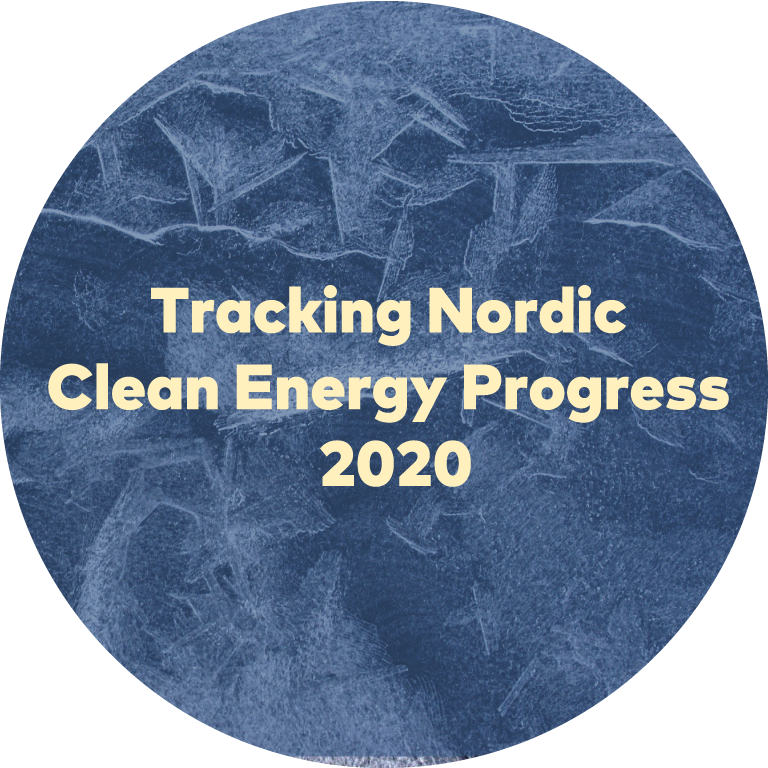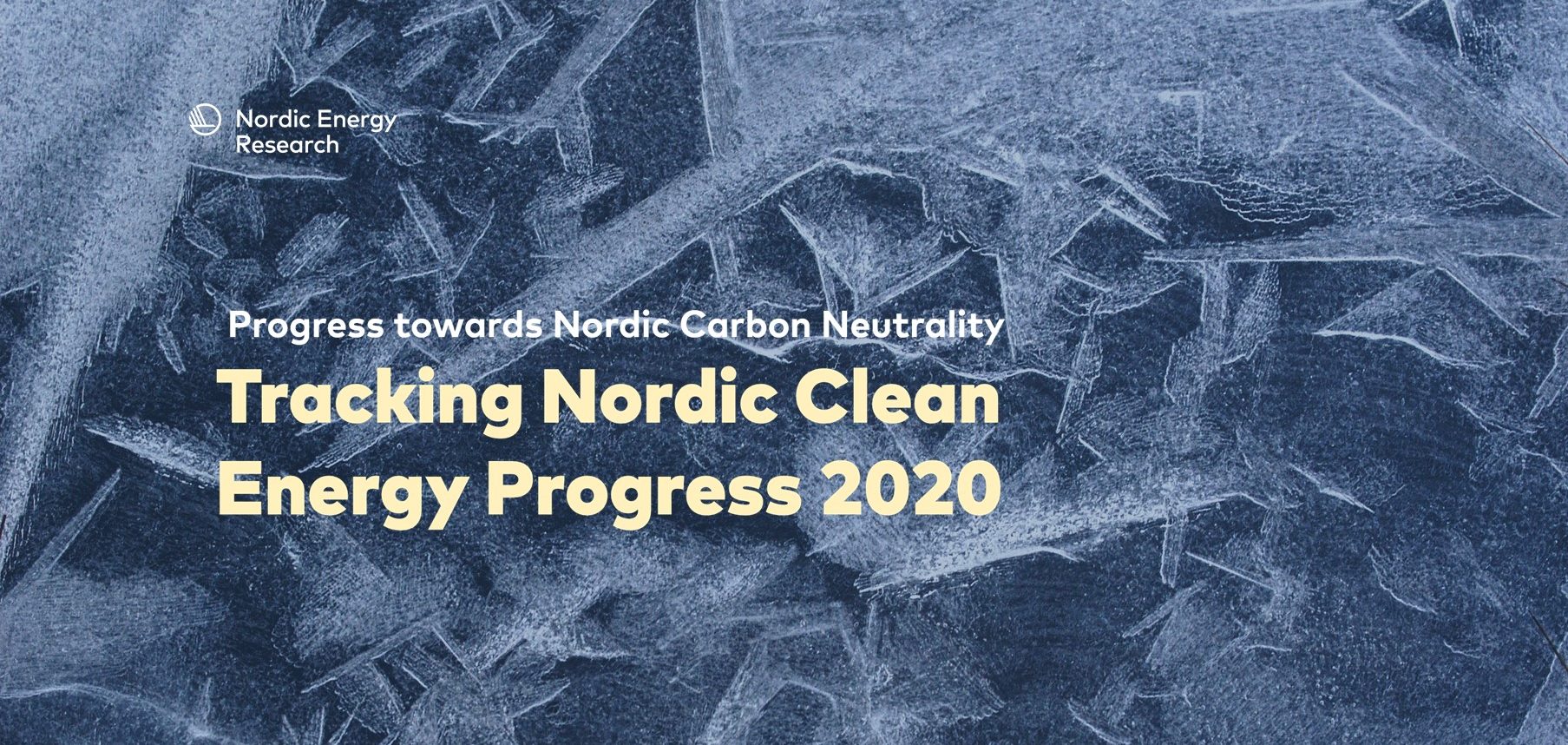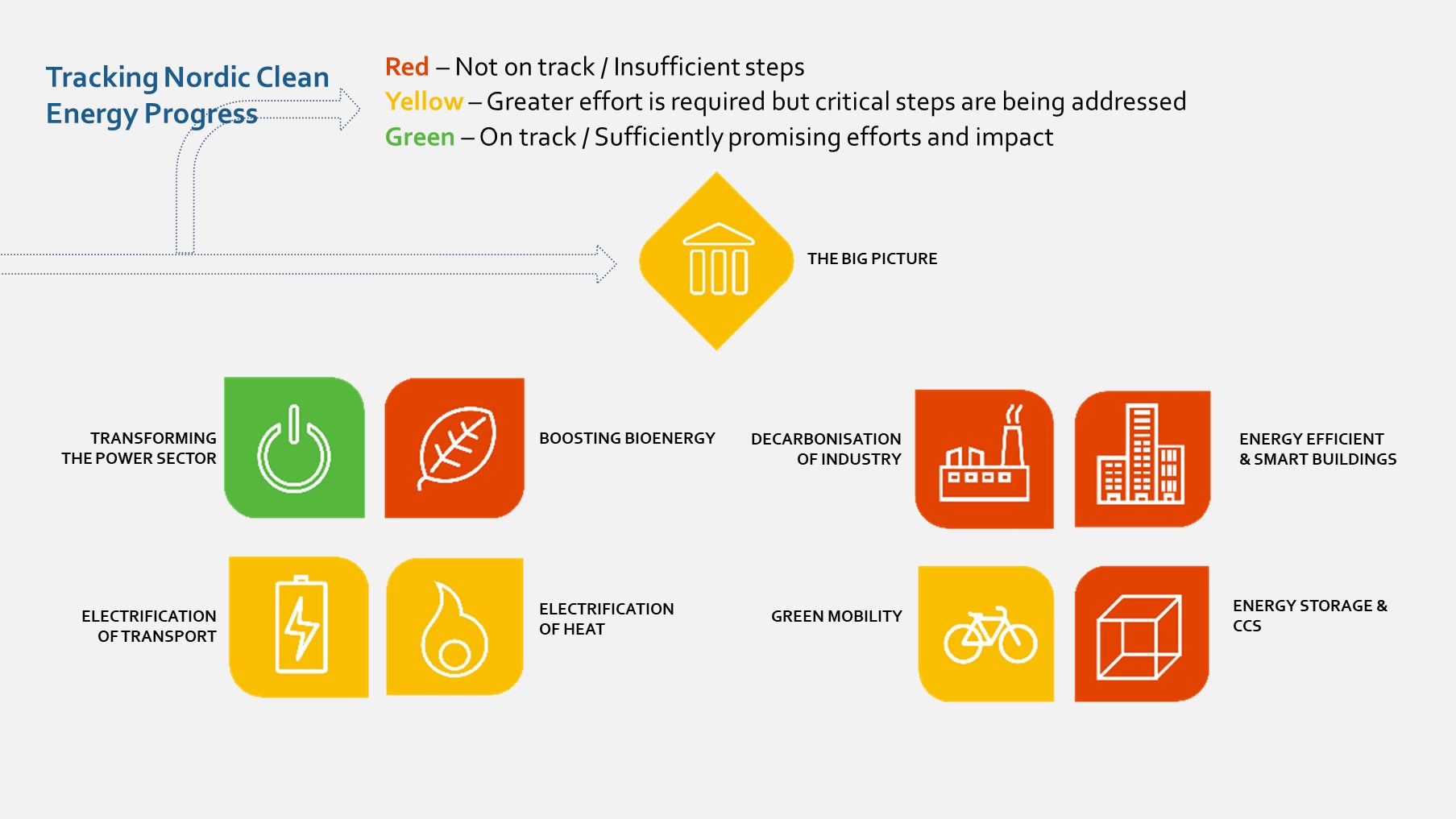
Tracking Nordic Clean Energy Progress – 2020 edition
This second edition of Tracking Nordic Clean Energy Progress provides updated figures and statistics, as well as a new section on the energy transition in Europe and the rest of…
This second edition of Tracking Nordic Clean Energy Progress provides updated figures and statistics, as well as a new section on the energy transition in Europe and the rest of the world. It is a brief, illustrative report that tracks the Nordic progress towards a carbon neutral society by highlighting the larger trends and by showcasing where Nordic solutions could have a global impact.
A new section in Tracking Nordic Clean Energy Progress 2020 compares the Nordic energy system to the European and global energy systems, highlighting the unprecedented role of biomass and waste, the high share of renewable energy and the large share of CO2-free electricity used in the Nordic industry and residential sectors, compared to the rest of the world.
In doing this, the report shows how the Nordic countries have managed to decouple energy use and CO2 emissions intensity in the last decade, while maintaining high economic growth.
The Tracking Nordic Clean Energy Progress report shows that increased action is necessary in all sectors but one (the power and heat sector). For three sectors; electrification of heat supply, green mobility and electrification of transport (except for passenger vehicles), critical steps are being taken, but greater effort is still required to put these sectors on track.
Four areas are lagging behind, either due to the lack of proven technologies, inertia and slow lead times in the sector, or due to missing markets:
- First, the creation of a market for sustainable bioenergy in high-value sectors (transport)
- second, decarbonisation of industry and the hard-to-abate process emissions
- third, the realisation of energy efficiency measures in buildings (measures that are already profitable in the long-run, but that are difficult to implement)
- and finally the development of carbon capture and storage (CCS).
Unlike the four aforementioned sectors, the power and heat sector continue to deliver substantial emission reductions, falling from 60.7 MtCO2 in 2007, to 35.1 in 2017, down with more than 9% from 2016 and well in line with the intermediate 2030 target of 19.2 MtCO2. This indicates that the Nordics are on track to a fully carbon-neutral electricity sector by 2050, driven by the fall of fossil fuel use and the increased production of, and investment in, renewable energy.
Some technologies stand out: Nordic wind and solar power capacity increased from 16.6 GW in 2017, to 18.8 GW in 2018. A whopping increase of 13 % year on year, raising PV production to over 1 TWh (higher than expected by 2030) and Nordic wind power generation to over 40 TWh.
The same goes for the deployment of the electric vehicles (EV) fleet. With almost half a million EVs on the Nordic roads, and a record 16% share of new passenger sales in 2019, EVs are likely to surpass expectations, providing hope that parts of the transport sector could already deliver sharp decreases in emissions in the near future.
”I believe that the Tracking Nordic Clean Energy Progress 2020 report provides useful insights into the progress made by the Nordic countries towards achieving Nordic Carbon Neutrality: By highlighting where the Nordic countries have been successful, and the areas for increased efforts, I hope the publication can help to achieve the visions adopted by the by the Nordic prime ministers in Helsinki in January 2019 from the Declaration on Nordic Carbon Neutrality.”
Klaus Skytte
CEO, Nordic Energy Research
Visit the project page to download the full report, or browse key figures and data.


